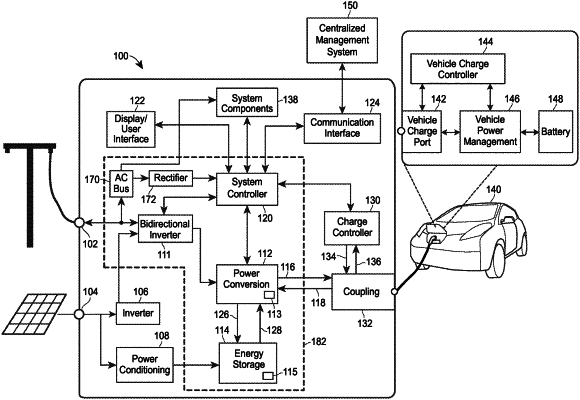| CPC B60L 53/62 (2019.02) [B60L 53/16 (2019.02); H01M 10/625 (2015.04); H01M 10/63 (2015.04); H02J 7/0013 (2013.01); H02J 7/0063 (2013.01); H02J 7/00712 (2020.01); H02J 9/062 (2013.01); B60L 53/53 (2019.02); B60L 2210/30 (2013.01); B60L 2210/44 (2013.01); H02J 2207/20 (2020.01); H02J 2300/22 (2020.01)] | 20 Claims |

|
1. A vehicle charging system for charging a vehicle, comprising:
a power input port configured to receive alternating current (AC) input electric power from a power source at a first voltage (V1);
one or more batteries configured to receive a direct current (DC) input current derived from the AC input electric power received at the power input port and store electric power from the DC input current;
a vehicle coupling configured to receive a DC charging current at a second voltage (V2) derived from the one or more batteries and to provide an electrical interconnect between the vehicle charging system and the vehicle in order to provide the DC charging current to the vehicle;
a resilient power subsystem configured to provide an AC operating current at a third voltage (V3) derived from electric power stored in at least one of the one or more batteries to a plurality of system components within the vehicle charging system, wherein the system components are AC components powered by the AC operating current and configured to control operation of the vehicle charging system; and
a system controller separate from the plurality of system components, comprising one or more processors configured to:
control operation of the plurality of system components;
obtain a controller operating current derived from the electric power stored in the one or more batteries during a time interval in which the AC input electric power is not being received from the power source; and
control the vehicle charging system to provide the DC charging current to the electrical interconnect to charge the vehicle during the time interval.
|